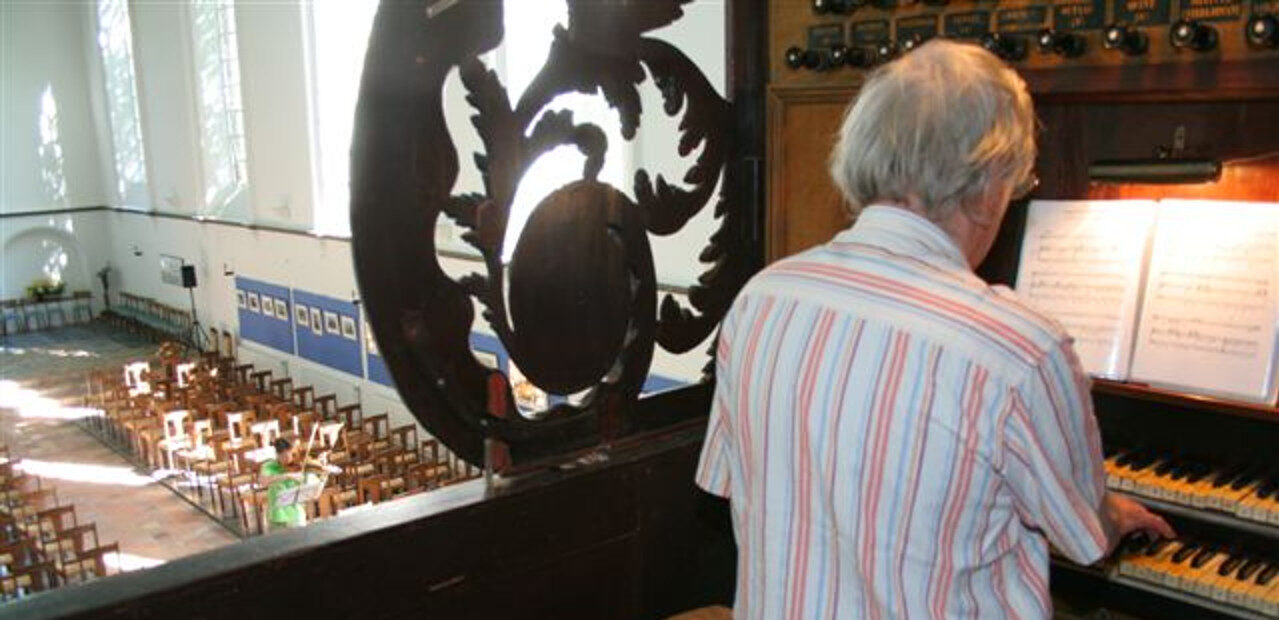This page contains a list of vocal compositions by Jan van Putten in English, created between 1991 and 2006 when he lived and was musically active in the Republic of Ireland. By clicking the title of a composition you will reach the score of that composition.
Preces and Responses for Choral Evensong are set in the Dorian mode which gives them a sturdy character. Inspirational was the strong first line of the melody of the calvinist eighth psalm, Geneva, 1542.These Preces & Responses were composed during a visit by the Choir of St. FinBarre’s Cathedral, Cork, to the Cathedrals in Salisbury and Hereford, England, in the early nineties of the 20th century.
The title of St. Carthage’s Mass is inspired by the name of the Cathedral where the composer was organist and choirmaster between 1995 and 2005. One may query whether the Mass would have been composed without the challenge of the Church Music Competition organised by the Irish Radio Station RTÉ 1 in 2001. After its creation the Mass was shortlisted for the finals of the competition. The intention of St. Carthage’s Mass is ecumenical: the Mass can be sung in Roman Catholic as well as in Anglican services. For both denominations the text of the ordinary of the Mass is identical, only the acclamations differ. All different acclamations are provided here. The Mass is available in two musical versions: Version I for Choir (SATB), Congregation and Organ, and Version II for Cantor or Choir (unison), Congregation and Keyboard Instrument. To encourage the involvement of the Congregation a separate Sheet for the Congregation is provided. If needed, members of the choir may reinforce the Congregation. The Mass has been sung on different occasions in the C\Anglican Cathedrals in Lismore and Waterford.
The Litany was composed for the enthronement of a new Bishop. The Litany can be said, but deserves to be sung. Originally, it was set in such a way that the new Bishop was supposed to sing the section “For the Church”. However, when it came to it, the Bishop preferred not to sing on his own (shyness?? voice not good enough?? did he not like the setting?? is singing solo below the standard of a Bishop??). The section “For the Church” was consequently attributed to the Choir, the rising semitones indicating that there still is hope, but how much?
A Blessing – for Peace also found its origin in the Church Music Competition of RTÉ 1 and was also shortlisted for the finals of the competition. It is set for 8-part choir a cappella; as it is short and without real difficulties it is within reach of most choirs. It is based on some of the famous words of Jesus known as the Beatitudes: Matthew 5 : 8, 9 and 12.
A Blessing of the Dead reflects the words written in Revelation 14 : 13, “Blessed are the dead who die in the Lord”. This composition also reached the finals of the RTÉ Church Music Competition in 2001. The motet has been composed with funeral services and funeral Masses and All Saints/All Souls in mind, but can be sung on many more occasions. A version in the Dutch language is available on this website among the Dutch language choral compositions.
The Responsorial Psalm Jesus Alone is the fruit of a commission by the Carmelite Sisters in Tallow, Co. Waterford, Ireland. In 2001 the relics of St. Thérèse of Lisieux travelled from France to Ireland where they were brought to and could be revered in all R.C.Cathedrals and in all Carmelite monasteries. For two days and nights they stayed in St. Joseph’s Monastery in Tallow. The nuns in Tallow asked Jan van Putten, who was providing organ lessons to some of them, to set a text by St. Thérèse, who was a Carmelite nun herself, to music, to be sung during the celebrations.
